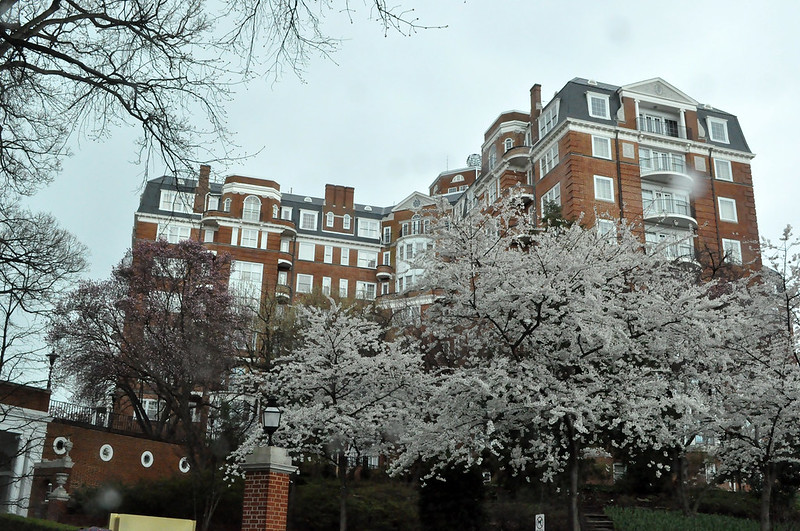Ward 3, which includes neighborhoods northwest of Georgetown that are the wealthiest in the city, is abuzz with talk of affordable housing. Ad hoc working groups are attracting new members to address racially discriminatory policies of the past. Residents and city officials embrace greater racial, cultural and economic diversity and believe that people who work here should be able to live here. All proclaim a desire to meet Mayor Muriel Bowser’s goal of 1,990 new units of dedicated affordable housing — that is, housing for people making between 30% and 80% of the area’s median family income — by 2025. This unity of purpose is the good news.
But achieving this goal will be challenging. Land in Ward 3 is expensive, and we can’t build our way to the goal with market-rate development. With virtually no vacant public land available, how will we finance affordable dwellings for those who need them most? What can we expect from private developers? And what is the best way to plan for neighborhood growth?
Some support the Office of Planning’s proposal to grant extensive density changes to the Future Land Use Map, known as the FLUM. “Up-flumming” lays the groundwork for upzoning for greater density and taller buildings. Developers could then build massive new market-rate developments along Connecticut and Wisconsin Avenues that would create a small percentage of affordable housing through D.C.’s loophole-ridden Inclusionary Zoning which requires that a portion of new construction be income-restricted. To reach the goal, a minimum of 100 new buildings of 100 units each would be needed.
For example, City Ridge, the former site of Fannie Mae on Wisconsin Avenue, is a 1.2 million square foot mixed-use development. Of the 750 new residential units, only 70 will be affordable. Even if all of the units were affordable, this huge project would reach less than half the mayor’s goal. While some developers will receive a tax abatement requiring 30% affordability for much smaller projects, their contributions will still fall far short.
Others, including this writer, oppose this approach, believing that the city’s Comprehensive Plan must be based on fundamental principles: Housing is a human right, no one should have to pay more than 30% of their income for dwelling, developer giveaways are a recipe for community disempowerment, and land use map changes should follow, not precede, small area planning. Granting publicly-owned development space through up-zoning should be a negotiation, not a matter-of-right entitlement. The city should not let developers off the hook from negotiating a Planned Unit Development in which the public exchanges additional building mass for community benefits, such as a higher percentage of affordable housing. Why suffer the headache of community negotiations when you can reap a substantial profit from radical new policies that make up-zoning inevitable?
While there are opportunities in Ward 3 to develop with little or no displacement of residents and businesses, there are limitations. New development should not displace Ward 3 residents who live in the numerous rent-controlled buildings along our avenues, many of whom are elderly and live on fixed incomes. Nor should new development drive out small businesses that serve neighborhood needs. New development must take place through thoughtful, community-driven planning, not one-size-fits-all approaches.
In Ward 3, we can expect private developers to produce some affordable housing, but the current puffed-up expectations are unrealistic. To produce 1,990 new units of affordable housing by 2025, the city must take intentional action and invest substantial public funds in many projects with a clear-eyed understanding of the limitations on what the private market will produce.
One exciting possibility to make substantial progress towards the mayor’s housing goal is for the city to purchase the bankrupt Wardman Hotel at the Woodley Park Metro station and convert it into affordable housing. Hotels are far easier to convert to apartments than office buildings because they are similar to residential apartment buildings. Hotel conversion can be done at roughly half the price of new construction, and much more quickly.
By repurposing 1,100 hotel rooms, expansive ballrooms and exhibit space, the hotel could become a great asset for new residents and long-time neighbors alike. The Ward 3 Housing Justice Working Group and the Wardman Strategy Team, both offshoots of the D.C. Grassroots Planning Coalition, are talking with the city and others about acquiring the property and developing it with innovative tools, supportive services and businesses. These could include a land trust, limited equity cooperatives, job training, small business incubation, non-profit meeting space, a grocery store and more.
To date, Ward 3 Councilmember Mary Cheh has offered no encouragement. In a recent letter to her constituents, she supported extensive up-flumming; and dismissed public acquisition of the Wardman as too expensive. We remain hopeful that she will rethink her support for developer-dominated approaches and embrace new ideas that welcome new residents into our neighborhoods.
Meg Maguire is a member of the Ward 3 Housing Justice Working Group and the Wardman Strategy Team. This article expresses her personal views.








